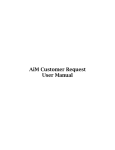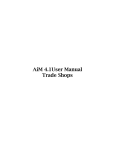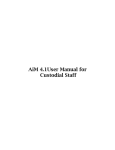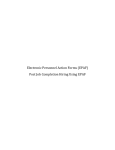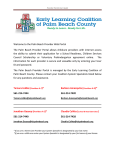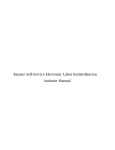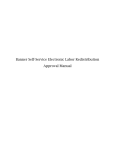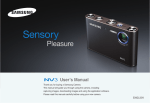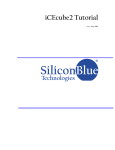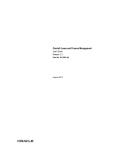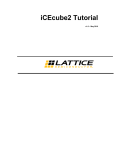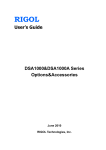Download AiM Customer Request User Manual
Transcript
AiM Customer Request User Manual AiM 6.2.1 User Manual Confidential Business Information This documentation is proprietary information of New Mexico State University (NMSU) and is not to be copied, reproduced, lent or disposed of, nor used for any purpose other than that for which it is specifically provided without the written permission of NMSU. All rights reserved. The unauthorized possession, use, reproduction, distribution, display, or disclosure of this material or the information contained herein is prohibited. Use of this material is solely for the support of New Mexico State University. April 2013 AiM 6.2.1 User Manual Table of Contents Introduction....................................................................................................................................... 4 AiM Navigation ................................................................................................................................ 5 Getting Started ............................................................................................................................. 5 Terminology ........................................................................................................................... 6 Logging on Process ............................................................................................................... 7 Navigation Icons .................................................................................................................... 9 Navigation from WorkDesk to Module to Screen ........................................................ 11 Selecting A Module............................................................................................................. 12 Working in a Screen ........................................................................................................... 13 Search Screen Defined ....................................................................................................... 15 Looking at your Search Query Results .......................................................................... 18 Create a Personal Query ............................................................................................................. 19 Using Note Logs .................................................................................................................. 21 Customer Request .......................................................................................................................... 23 Creating A Customer Request ......................................................................................... 28 Guidelines for Attaching Documents ............................................................................ 32 Printing a Customer Request ........................................................................................... 34 Corrections to an Incomplete Customer Request ................................................................. 44 Checking the Status of a Work Order ............................................................................ 47 Cost Reports .................................................................................................................................... 50 190-History Report and 370 Transaction Detail Report ........................................... 50 Cost Analysis ....................................................................................................................... 53 Looking up Billed Transactions....................................................................................... 54 March 2013 3 AiM 6.2.1 User Manual Introduction This manual will provide an overview of the AiM application, modules, and step-bystep instructions to complete individual screens within the modules. Based on an individual’s role the setup and modules available will determine the options available to users for use when working with this application. Overview In this manual you will learn how to: Logon to AiM application Identify terminology Identify icons Select a module Work with screens Perform a Search Query Create a Personal Query Use Note Logs Complete a Customer Request Make corrections to an incomplete Customer Request Check the status of a Work Order Cost Reports April 2013 AiM 6.2.1 User Manual AiM Navigation Getting Started This section is designed to provide general navigation information that is needed when working with the AiM application. It includes terminology and steps for accessing and navigating the system. March 2013 5 AiM 6.2.1 User Manual Terminology This list provides a description of terms referenced in this manual and used in the AiM application. Closed work order Customer Request Multi-shop work orders NonReimbursable Open work order Non-Shop Stock Phase Property Reimbursable (Billable) Rapid Timecard Entry Shop Stock Single shop work order Work Order Closed phase A closed work order indicates that all work has been completed and all materials have been charged to the work order. It does not imply that all charges have been billed. The customer request is the screen used to submit on-line requests for work. It defines what work is to be performed, who the work is for, and where the work is located. A customer request must be approved to become a work order. These are work orders that require involvement of multiple shops to get a job done. The first shop assigned to a multiple shop work order is the “responsible” shop for coordinating the closure of the work order. A work order is considered non-reimbursable if the work is routine maintenance to I&G funded buildings. An example of a non-reimbursable work order is moving furniture on campus. An open work order is a work order that is being actively worked on by shops. Shops can charge time and material to an open work order. Inventory that is maintained in the Main Warehouse. The phase is used for tracking each task performed in a work order. It defines the specific task details including: the work to be performed, the location of the work, who will perform the work, which asset or equipment is worked on, and when to perform the work. Identifies the building and is represented by an assigned number in the AiM system. A work order is considered reimbursable if the work includes non-routine maintenance of I&G funded buildings or is not I&G related. Examples of reimbursable work are moving furniture off campus or setting up tables and chairs on campus. The rapid timecard entry screen is used to quickly enter multiple time card records in a single entry screen. This will be the method for time entry for all non-exempt employees. Most of the OFS inventory is maintained in the Warehouse, but some areas maintain a small inventory within their shops. This inventory is known as shop stock. Work orders that can be completed within a single shop. A single shop work order may evolve into a multiple shop work order. The work order is the main screen used for tracking work in the system. It defines what work is to be performed, who the work is for, where the work is located, and how the work is classified. A work order may have multiple shops (phases) involved. If a work order phase is closed for a particular shop, that shop cannot charge time or materials to that work order. Other shops assigned to work order may charge time and material to the work order as long as the phase is still open. April 2013 AiM 6.2.1 User Manual Logging on Process AiM supports authenticated user access, meaning that the system verifies your credentials and you are given access to the system based on your assigned security. To use AiM as an authenticated user, you must successfully logon by providing your credentials: MyNMSU Username and Password. AiM can be accessed from any Internet browser such as Internet Explorer, Netscape, or Mozilla Firefox. 1. Type http://fms-prod.nmsu.edu/fmax in the address bar of your web browser and press Enter. The logon splash page will be displayed. 2 3 2. Enter your User Name and Password in the field boxes. 3. Click on the Login button. You can create a bookmark in your browser for quick access to the AiM system. March 2013 7 AiM 6.2.1 User Manual Once you have logged on the WorkDesk will be displayed. 1 2 5 6 7 8 3 4 1. AiM icon identifies the vendor. Note: When navigating away from the WorkDesk and working within the application it may be necessary to return to the WorkDesk. This can be performed by clicking on the AiM icon. 2. The header will display the WorkDesk and a Module once selected. 3. Menu will display Modules available for use (based on security Menu options may vary). 4. Quick Links will display a list of available reports. Reports listing will also be accessible from various Modules. 5. Greeting and User ID are displayed and identify the current logged on user. 6. Logout link is displayed and used to exit the application. Note: It is recommended to logout properly from the application by using the logout link. 7. About provides vendor information and version of application. 8. Help provides access to on-line Help (this information comes with the application). Once logged on, use the icons within the application to navigate; do not use the browser options available. To properly logoff, use the Logout link; do not use the X (exit browser options). April 2013 AiM 6.2.1 User Manual Navigation Icons Below is a list of the common navigation icons that may be displayed while working within the application. Icon Description Keyboard Short Cuts Icon Description Keyboard Short Cuts New Alt + I Quick Find Filter Alt + F Edit Alt + E Zoom Alt + Z Back to Browser Alt + B Cancel Alt + C Save Alt + S Done Alt + O Copy Record Alt + Y Previous Browse Alt + P Email Record Alt + M Next Browse Alt + N Print Alt + J First Browse Alt + F Export Alt + V Last Browse Alt + L Execute Search Alt + S Go Alt + G Search Alt + S Next Alt + 3 Help Alt + ? March 2013 Intentionally left blank Intentionally left blank Intentionally left blank 9 AiM 6.2.1 User Manual Below is a list of additional icons that may be displayed while working within the application. Icon Description Keyboard Short Cuts Icon Description Keyboard Short Cuts Add Detail Record Alt + A Error Log Alt + L Delete Detail Record Alt + D Error Flag Intentionally left blank Approve/Yes Alt + A Reset Alt + R Reject/No Alt + R Add Query Alt + A Generate Alt + G Alt + D Add Content(WorkDesk) Alt + I Remove Query Reset (WorkDesk) Alt + R Note: The keyboard short cuts are dependent on the screen displayed. April 2013 AiM 6.2.1 User Manual Navigation from WorkDesk to Module to Screen Displayed below is the flow to access a screen from the WorkDesk. This process is applicable for accessing all modules. 1 1. 2. March 2013 2 Select desired Module. Module will be displayed. Select desired Screen. Screen will be displayed. 11 AiM 6.2.1 User Manual Selecting A Module When working with a Module, screens are available for selection allowing required activity to be performed based on the user’s role. 1 1. To select a Module place cursor over the desired Module and click to select. Module will be displayed. Once in a Module a list of screens will be available for selection as displayed below. 3 5 4 6 2. Selected Module and Menu options will be displayed. 3. The Icon identifying the Module will be displayed. When working in a screen, clicking on the Module Icon will return the Module Menu. 4. To go directly to a Screen, click on desired Screen name from the menu list. 5. The Search icon directly opens the Search options for that screen, allowing a quick search of a record or data on the screen displayed. 6. By clicking on the New icon, it opens a new record in edit mode, ready for information to be entered. April 2013 AiM 6.2.1 User Manual Working in a Screen Once a screen is open it will always be in a query state. To create a new or edit a record, use the applicable icons displayed in the header on the right hand corner of the main title bar. 2 1 1. To process a new Customer Request click on the New icon which will open the screen and place it in a ready state for fields to be completed. 2. The View field provides additional screens available while working within a screen. March 2013 13 AiM 6.2.1 User Manual 3. When working on a new screen or editing a screen, required fields are outlined in red. Information is segmented into data Blocks with headings (example: above shows Customer Request, Request Details, Work Order, Requestor, Accounts and Location blocks). April 2013 AiM 6.2.1 User Manual Search Screen Defined The Search screen is a very powerful option within the application that gives users the ability to perform various types of searches based on criteria entered. This section will provide a general overview and introduction of the options available on the Search screen. The Module displayed will determine the data criteria that are available for selection. When performing a Search ask the question, “What information am I looking for?” This will assist when keying in the exact criteria needed to perform the Search. 2 1 3 4 With the Search screen displayed perform a search by using the various search options listed below. 1. Ascending/Descending fields. This option can be used to have search results in Ascending/Descending order. From the drop down list make desired selection. 2. Sort sequences fields. This is optional and not required to perform a Search. To sort your Search results in a specific order you can use the Sort Sequence fields. In the box enter your order by placing 1, 2, etc. This will display and sort the fields on the results screen. March 2013 15 AiM 6.2.1 User Manual 3. Operator (text qualifiers) field, drop down box: Use any of the standard operations to assist in narrowing searches to find the exact information desired. Standard Operations = Equal < less than > greater than >= greater than or equal to <= less than or equal to <> not equal to Starts with (starts w/string entered) Ends with (ends w/string entered) Contains (contains the string entered anywhere in the field) Null (must contain a value) Not null (must Not contain a value) In (list items to include) Not in (list items to omit) Between: Dates only (fill in as required) Within: Dates only (fill in as required) Older than (select desired option) Newer than (select desired option) 4. Criteria field: Within the field box, enter the information needed to perform the search, or by using the Zoom icon the appropriate selection options will be displayed. Note: If searching in a Description field, consider selecting Contains from the operator field and then using the Wild Card % (percent sign) before and after the criteria entered to define your Search. It is recommended to keep a Search to one or two words. Example: looking for the word “Air”, enter %Air% in the description field. If using two words, enter %Air%%conditioning%. While working in the Search Screen you may find that some fields may be hidden. To display hidden fields click on Show if you want to hide fields click on Hide. April 2013 AiM 6.2.1 User Manual Performing a Search Query Below is an example of performing a Search Query. Remember based on your Module selection, criteria fields displayed may vary. With the Search screen displayed, search for all approved customer request by completing the following steps. 1 3 2 1. Type “APPROVED” in the Status field (fields are not case sensitive). 2. Type “Organization number” in the Organization field. Note: To display a listing of the data fields, use the Zoom icon. Leave the Shop field blank. Click on the Zoom icon and select a shop. 3. Click on the Execute Search icon located on the main title bar. 4. The search results will be displayed based on the criteria entered. 5. To perform another query, go back to the Search screen (click Search icon) and make modifications to run another Search. To return to the Module Menu click on the module icon to the left of the Module title. March 2013 17 AiM 6.2.1 User Manual Looking at your Search Query Results With the search results displayed review the screen below. 1 2 6 5 4 3 1. 2. 3. 4. 5. 6. Column headings are Transaction, Reference, Status, Common Problem List, Description, Requestor, Contact, Contact Phone, Contact Email, University Campus, Property, Location or Room, etc. Columns can be sorted by clicking on one of the column headings. Page Navigation is located at the bottom of the screen. This will represent the number of pages available for review. To go directly to a specific page, enter the page number in the field and click on the green Go icon. Page (DVD) Navigation: forward/backward icons, and first page/last page icons. Records Found identifies the number of records found for the search selection. Icon bar displays the additional available icon options on the screen displayed. By holding your mouse over the icon, it displays the function of the icon. April 2013 AiM 6.2.1 User Manual Create a Personal Query Personal Queries, that provide Searches for information specific to the users, can be created and added to the WorkDesk for easy access. This example creates a Personal Query to list all Incomplete Customer Requests. 1. First open any Search screen and select Customer Request from the Customer Service Module. 2 4 3 2. Enter Incomplete in the Status field or click on the zoom icon to select a status. 3. Enter the name of the Requestor in the Requestor field. 4. Click on the Add Query icon. March 2013 19 AiM 6.2.1 User Manual 5. The following Personal Query Screen will be displayed. 6 10 7 8 6. Enter a name for the Personal Query (e.g. Incomplete Work Orders). 7. Click on the arrow next to the WorkDesk field and select Yes (results will be displayed in the Personal Query list on the WorkDesk). 8. Click the arrow next to the WorkDesk Count, select Yes (results will provide a count in front of the work order Personal Query and on the WorkDesk. 9. Though not required, the same information or name given to the Personal Query can be entered in the Description field. 10. When finished click on the Done icon to return to the previous Search screen 11. Click on the Save icon (no shown) located on the header. 12. Click on the AiM icon to return to the WorkDesk. The Personal Query Process is now complete! April 2013 AiM 6.2.1 User Manual Using Note Logs When creating a record (Customer Requests) the Description field is often used; however, the number of characters (text) that can be entered is limited, and descriptions can be changed, deleted, etc. After creating and saving a record the Notes Log, which is a valuable feature in the AIM application, becomes available. The Notes Log is not limited in the number of characters (text) that can be entered and, once entered, becomes a permanent record. The following screen shot represents a record that has been created and saved in the AiM application. To use the Notes Log, complete the following steps. 1 1 1. Click on the View Select arrow, select Notes Log from the drop down list, and the following screen will be displayed. 2 2. Click on the Add Notes icon (green plus sign) and the following screen will be displayed. March 2013 21 AiM 6.2.1 User Manual 5 3 4 3. Click on the Notes Type Zoom icon and make the appropriate selection. For example, give AUTHORIZATION to use a specified index number. 4. Type the desired information in the Notes field. This will store the Note with the attached Customer Request. 5. Click on the Save icon. April 2013 AiM 6.2.1 User Manual Customer Request Customer Requests are generated through the Customer Service Module. After the customer completes the process of entering and saving a request, it will be evaluated by the OFS Work Order Desk and if complete it will be approved and a Work Order will be created. When creating a Customer Request and when completing the Requestor block an Organization field is required. This number is not the department organization but rather what is referred to as the F-Level organization number. Keep in mind that this F-Level Organization is associated to an Index and if a reimbursable request is being submitted the appropriate Organization (F-Level number) must be used to ensure entry of that Index number in the AiM system. Prior to submitting a Customer Request it is recommended that you have available the Organization (F-Level number). To retrieve the number needed use either the “Index Lookup” or the “Organization Lookup” located under the “Quick Links” either on the WorkDesk or through the Customer Service module. Follow steps below to retrieve the Organization (F-Level number). Using Index Lookup After logging on the AiM WorkDesk will be displayed, select the Customer Service module to display. 1 1. Click on the Index Lookup link and the following screen will be displayed. March 2013 23 AiM 6.2.1 User Manual 2 2. Enter the desired Index number and click on the Submit button. Note: Do not use the Enter Key as this will erase the Index number just entered. 4 3 3. 4. This will display the F-Level Organization associated to the index number. That is the Organization (number) that needs to be entered into the Organization field when creating the Customer Request. Close window to return to AiM. April 2013 AiM 6.2.1 User Manual Using Organization Lookup To use the Organization Lookup you will need to know the department organization number and then follow the step below. 1 1. Click on the Organization Lookup link and the following screen will be displayed. March 2013 25 AiM 6.2.1 User Manual 2 2. Click on the drop down arrow to display a list of department organizations by number. 3 3. From the drop down find the appropriate department organization number and highlight, then click on the Submit button and the following screen will be displayed. April 2013 AiM 6.2.1 User Manual 5 4 4. Locate the number that begins with letter “F”, that is the Organization (F-Level) number needed to input in the AiM system on the Organization field when creating the Customer Request. Note: This process will need to be completed again if using a different Index and the Organization (F-Level) is not known. Once you are familiar with the Organization (F-Level) keep this information available for future reference. 5. Close window to return to AiM. March 2013 27 AiM 6.2.1 User Manual Creating A Customer Request A couple of points to note before getting started: 1) a Customer Request type One will not require an Index number, and 2) a Customer Request type Two will require an Index number and you will need to have it available for entry. The steps below introduce a Customer Request type Two. After logging on, the AiM WorkDesk will be displayed. 1 1. Click on Customer Service and the following screen will be displayed. 2 2. Click on Customer Request and the following screen will be displayed. April 2013 AiM 6.2.1 User Manual 3 3. Click on the New icon. The red boxes displayed on the computer screen identify fields that are required. Note: The Organization, Contact, Contract Phone, Contact Email and Acct Code are additional fields that are required but do not have a red box around them. 4 4. Type in a description of the work being requested in the Description field. Note: If attaching documents to a Customer Request include “see attachment” in the description field. For steps on attaching documents refer to “How to Attach Documents in AiM” section. Guidelines for Attaching Documents Documents within AiM are not private. All documents can be viewed by anyone with access to AiM. Do not attach documents with sensitive or private information. Documents attached within AiM should be necessary and relevant to the applicable customer request or transaction. Please be cognizant of server space limitations. Do not attach multiple copies of the same document(s) and/or picture(s). March 2013 29 AiM 6.2.1 User Manual 5 6 5. Enter the Organization number in the Organization field and click on the Zoom icon to validate. 6. Enter a Contact name, Contact Phone, and Contact Email (this is needed if communication is required). April 2013 AiM 6.2.1 User Manual 10 9 7 8 7. Enter an Index number or view selection options by clicking on Zoom icon. See Team Tip below. 8. Enter the Acct Code of 758500 (this will be the standard account code to use). Note: Though not identified with a red box, Organization, Contact, Contact Phone and Contact Email are additional fields that are required field. 9. A University, Campus, Property and Location or Room are required fields; click on the Zoom icon to select these fields. Use the Search feature to select the Property location. Note: Recommend when searching selecting the word, “contains” from the drop down list to the left of the description field in the Search screen. Once building name appears select the number to populate the Property field. Initially, this is a drill down process but once familiar with the Property number, it can be entered directly. 10. Once all of the information has been entered, click on the Save icon. 11. The Customer Request is complete and is awaiting final approval from the OFS Work Order Desk where a Work Order number will be assigned. Note: An email notification will be sent to confirm the request has been received by the OFS Work Order Desk. The Customer Request process is now complete! When submitting a request for an I&G building in the Index field you can select to use 0-Shop Charge-I&G for non-reimbursable work. When OFS Work Order Desk reviews the request if it is determined that the work is reimbursable the Customer Request will be marked as Incomplete and a valid Index or Indices will need to be identified. March 2013 31 AiM 6.2.1 User Manual Guidelines for Attaching Documents The related documents function allows you to attach electronic files as part of your customer service request. You can attach all types of files to your request, including word documents, spreadsheets, emails, URLs or image files among others. This section will provide detailed instructions on how to attach a document to a customer request in the AiM system. Guidelines are listed below. Documents within AiM are not private. All documents can be viewed by anyone with access to AiM. Do not attach documents with sensitive or private information. Documents attached within AiM should be necessary and relevant to the applicable customer request or transaction. Please be cognizant of server space limitations. Do not attach multiple copies of the same document(s) and/or picture(s). April 2013 AiM 6.2.1 User Manual Attaching Documents With completed Customer Request displayed follow steps below. 1 1. In the Description Field ensure that “See Attachment” is included. After entering the description of the work on the description field of the customer request make sure to also state “See Attachment” when sending an attachment; otherwise, it will not be noticeable by the work order recipient. March 2013 33 AiM 6.2.1 User Manual 2 3 2. Click on the View Drop Down. 3. Select Related Documents. April 2013 AiM 6.2.1 User Manual The Related Documents Form will be displayed. 3 4. Click on the Add New Document icon. 5 5. Click on the Browse button. March 2013 35 AiM 6.2.1 User Manual 5 6. Select the document file. 5 7. Click on the Next icon. April 2013 AiM 6.2.1 User Manual 8 9 8. In the Title field enter the name of the file if not already displayed. 9. Click on the Type Zoom icon. 10 10. Select the Type Name. On this example Image will be selected. Make sure to select the proper category type for your attachment. The type attribute drives the behavior of how a document gets handled in the system. March 2013 37 AiM 6.2.1 User Manual 11 11. Click on the Next icon three times. Note: Do not make roles assignment to the attach documents as it will limit individuals from seeing the attachments. 12 12. Click on the Done Flag. 13. Repeat steps 2 – 12 if you need to attach additional documents on the same customer request; otherwise skip to step 14. April 2013 AiM 6.2.1 User Manual 14 14. Click on the Save button. March 2013 39 AiM 6.2.1 User Manual Printing a Customer Request Once a Customer Request has been submitted for review a print copy can be obtained by completing the following steps. 1 1. Click on the Print icon to print a copy of the Customer Request and the following screen will display. April 2013 AiM 6.2.1 User Manual 2 2. Click on the Print Report icon and the following screen will display. March 2013 41 AiM 6.2.1 User Manual 3 4 3. Click on the PDF radio button. 4. Click on the OK icon and the following screen will be displayed. April 2013 AiM 6.2.1 User Manual 5 5. Click on the Print icon. March 2013 43 AiM 6.2.1 User Manual Corrections to an Incomplete Customer Request It may be necessary to make changes to the Customer Request if the Status reflects Incomplete. This would occur after review by the OFS Work Order Desk and an email will notify customer of what changes need to be made. To make changes to the Customer Request, the following steps must be completed. 1 1. Click on Customer Service and the following screen will be displayed. 2 2. To locate the Customer Request that needs to be changed, click on the Search icon and the following screen will be displayed. Or use the Search feature as described in the Performing a Search Query section. April 2013 AiM 6.2.1 User Manual 3 4 3. In the Status field click on the Zoom icon and select Incomplete. 4. Click on the Execute Search icon and the following screen will be displayed. 5 5. Select the Transaction number (Customer Request), that needs to be changed and the following screen will be displayed. March 2013 45 AiM 6.2.1 User Manual 6 6. Click on the Edit icon and the following screen will be displayed. 7 8 7. Make the required modification, click on the Zoom icon, then change the Request Status from INCOMPLETE to RESUBMITTED. 8. Click on Save button. 9. The Customer Request will go back to the OFS Work Order Desk for review. April 2013 AiM 6.2.1 User Manual Checking the Status of a Work Order Once a Customer Request has been approved and is assigned a Work Order number, it can be tracked through the AiM system. The following steps will assist in tracking a Work Order through a Customer Request. 1. Select the Customer Service module and the following will be displayed. 2 2. Click on Search icon and the following screen will be displayed. 3 5 4 3. In the Status field, click on the Zoom icon and select Approved. 4. In the Property field enter the Property number. (This will narrow the search.) 5. Click on the Execute Search icon and the following screen will be displayed. March 2013 47 AiM 6.2.1 User Manual 6 6. A list of all approved transactions will appear. Select the Transaction number (Customer Request) to view and check the status of a Work Order. The following screen will be displayed. 7 7. Locate the Work Order block and Work Order number in the field. Click on the Work Order number link and it will open the work order assigned. The following screen will be displayed. April 2013 AiM 6.2.1 User Manual 10 8 9 8 8. The Work Order status and assigned Phase status are listed. 9. To review the Phase, click on the Phase number if desired. 10. To exit the Work Order click on the Done (green flag) icon and you will return back to the to the Customer Request. If the phase statuses are marked “Work Complete” and work status is marked “Ready to Close”, the work order has been finalized and can be considered complete. March 2013 49 AiM 6.2.1 User Manual Cost Reports There are several ways to review the cost associated to a Work Order. Standard reports available are: 190-History Report, 370-Transaction Detail Report and Cost Analysis (summary of charges), which will be addressed in this section. 190-History Report and 370 Transaction Detail Report Report 190-WO TRANS VIERWER, provides the Work Order description and Transaction History for the assigned Work Order. Report 370-WO TRANS DETAIL RPT, provides the Work Order description and the detailed transaction for charges applied, for example, Labor, Material and Equipment. To access these reports, perform a Search for the desired Work Order through the Work Management Module. 1 1. Click on the Search icon from the Work Management Menu and the following screen will be displayed. 2 3 2. 3. Enter the desired Work Order number in the field. Click on the Execute Search icon and the following screen will be display. 4. Click on the Work Order number and the following screen will be displayed. 4 April 2013 AiM 6.2.1 User Manual 5 5. With the Work Order displayed click on the Print icon and the following screen will be displayed. 6 6. Click on 190-WO TRANS VIEWER or 370-WO TRANS DETAIL RPT, or another section, report and the selected report will be displayed. March 2013 51 AiM 6.2.1 User Manual 7 7. The selected report will be displayed. Click on the Print icon and the following screen will be displayed. 8 9 8. Select PDF radio button if PDF format is desired. 9. Click on OK button. 10. A window will open with PDF format displayed; proceed to print report. Close window. 11. Click on the Done icon when all desired reports have been printed. April 2013 AiM 6.2.1 User Manual Cost Analysis Cost Analysis will provide a summary of charges applied to a Work Order. To view Cost Analysis the Work Order will need to be displayed. Follow Steps 1- 5 from previous section accessing reports 190 or 370. With the Work Order displayed follow the process listed below. 1 2 1. 2. Click on the Down arrow from the View: Select, and a drop down list will be displayed. Click on Cost Analysis and the following screen will be displayed. 3 3. Click on the Done icon when finished. March 2013 53 AiM 6.2.1 User Manual Looking up Billed Transactions Using the Billed Transaction screen allows for greater flexibility if wanting to run more queries. Below is a general example of how a query can be performed but be aware that various combinations of queries can be performed based on the need. 1 1. Select the Finance module and the following screen will be displayed. 2 2. Click on the Search icon and the following screen will be displayed. April 2013 AiM 6.2.1 User Manual The Billed Transactions search screen allows a user to select any of the listed data fields to perform a query. The additional features can be selected for the desired query. A query can be set to display in ascending or descending order: Sort Sequence fields allow for the selecting the order of the columns to be displayed, Operator fields allow for narrowing the selection of the data fields to be listed on the selected query. Note: When running a Billed Transaction query if an index is not specified the report results will include the credits to the Facility Services indexes and costs will zero out. Below is an example of running a query for transactions that have been billed for a specific Index. 7 3 3. 4. 5. 6. 4 5 Scroll down and find the Index field. From the Operator field, select In from the drop down list. Enter the desired Index number in the Criteria field. Click on Execute Search icon and the following screen will be displayed. 7 7. To export query, click on Export icon. Once the file has been exported and saved, the Bill Date column format will need to be changed to a date format so the date is displayed. March 2013 55 AiM 6.2.1 User Manual Below is an example of running a query for transactions that have been billed on multiple indices. The Sort Sequence field will be used to display what transactions are associated with the Index. With Billed Transaction Search screen displayed follow these steps. 1 1. 2. 3. 4. 2 4 3 Scroll down and find the Index field. Enter 1 in the Sort Sequence field next to Index. From the Operator field, select In from the drop down list. Enter the two desired Index numbers in the Criteria field. Note: When searching for multiple Indices ensure that a comma”,” is placed between the Indices with no spaces. 6 8 7 9 10 5. 6. 7. 8. 9. 10. Scroll down and find the remaining fields. Enter 2 in the Sort Sequence field next to Transaction. Enter 3 in the Sort Sequence field next to Description. Enter 4 in the Sort Sequence field next to Transaction Type. Enter 5 in the Sort Sequence field next to Transaction Date. Enter 6 in the Sort Sequence field next to Subledger. April 2013 AiM 6.2.1 User Manual 11 13 12 15 14 11. 12. 13. 14. 15. Enter 7 in the Sort Sequence field next to Bill Type. Enter 8 in the Sort Sequence field next to Bill Sequence. Enter 9 in the Sort Sequence field next to Bill Date. Enter 10 in the Sort Sequence field next to Bill Amount. Click on the Execute Search icon and the following screen will be displayed. 16 17 16. 17. Click on the Index column to group all the same indices. To export query, click on Export icon. March 2013 57 AiM 6.2.1 User Manual Below is an example of running a query and selecting the desired data fields to display and also using the Sort sequence fields for column field order. 1 3 2 4 6 5 1. 2. 3. 4. 5. 6. 7. Enter a 1 in the Sort Sequence field next Enter a 2 in the Sort Sequence field next Enter a 3 in the Sort Sequence field next Enter a 4 in the Sort Sequence field next Enter a 5 in the Sort Sequence field next Enter a 6 in the Sort Sequence field next Scroll down and find the Bill Type field. 8 12 11 10 8. 9. to Transaction. to Description. to Transaction Type. to Transaction Date. to Subledger. to Work Order. 9 Enter a 7 in the Sort Sequence field next to Bill Type. Enter an 8 in the Sort Sequence field next to Bill Date. Note: If you want to narrow the search, you can choose to enter specific dates. In the Operator field select between, the field will expand and display two fields select from calendar or enter the billing date to display; use format of month day, and year (2013). 10. 11. 12. Enter a 9 in the Sort Sequence field next to Bill Amount. Enter a 10 in the Sort Sequence field next to Index. In addition, from the Operator field select In from drop down list and enter an Index number in the Criteria field. Click on Execute Search icon and the following screen will be displayed. April 2013 AiM 6.2.1 User Manual 14 13 13. 14. With query displayed you can choose to Export query. When finished Logout of application. Once the file has been exported and saved, the Bill Date column format will need to be changed to a date format so the date is displayed. March 2013 59



























































